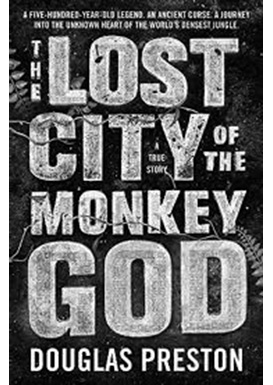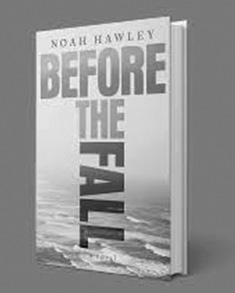 The Lost City of the Monkey God by Douglas Preston – A True Story. Splendide Mendix Inc. 2017. 302 pp.
The Lost City of the Monkey God by Douglas Preston – A True Story. Splendide Mendix Inc. 2017. 302 pp.
This is the story of the discovery of the Lost City of the Monkey God, which is in Honduras, or as it also known, the White City. It is generally not the kind of book I would be apt to choose to read, but I saw the author being interviewed on television, was intrigued and read it. It is amazing.
This city had been speculated about for many years. It had been looked for and sometimes seemed it might have been found, but because it was of a much smaller scale, in at least one case explorers made false claims that they had found it.
It was in a large area of totally dense rainforest and even planes couldn’t locate it. A breakthrough came with the invention of a lidar in 1960 which could map images under the forest. Consequently, a team of scientists which included the author was put together to look for it. In 2015, the team flew to Honduras to begin what was an extremely arduous expedition.
The first part of the book was written about the previous expeditions which was not as exciting as the rest of the book but still interesting. After that, the description of the actual difficulties made one wonder who would sign on. The terrain would be very rugged, and one of the worst hazards would be the snakes, particularly the fer-de-lance, a large and aggressive snake, that comes out at night, can shoot its venom more than six feet, can penetrate a leather boot with its fangs, and, by the way, is fatal.
No one backed out, however, and the adventure began. A helicopter took them to a landing site and they began the long trek in. It was not simple as there were three possible sites- T1, T2, and T3. They picked T1 and that was the one that there had been rumors about for hundreds of years. Of course the story doesn’t come close to ending there. They only could stay for eight days and although they did not reveal the location because there was the possibility of someone else finding it and looting, which would spoil the integrity of what could be learned.
While no one came down with any serious diseases there, most of them got sick after they had been home for awhile. One of the worst was from a sand flea bite that was originally very hard to diagnose and difficult to treat, with terrible side effects. It is called Leishmaniasis. Because he was probably immune, the author did go back to the site a year later where they excavated some artifacts. The president of Honduras, Juan Orlando Hernandez, came to the site for a ceremony where he was presented with the artifacts. One can wonder why that civilization did not survive. The author notes that “archaeology is thick with cautionary tales that speak directly to the 21st century.”
– C.M
 Before the Fall by Noah Hawley. Grand Central Publishing 20l6. 390 pp.
Before the Fall by Noah Hawley. Grand Central Publishing 20l6. 390 pp.
This novel is about a tragedy and its very complicated aftermath. On a warm evening in August a private plane with 11 passengers left Martha’s Vineyard headed for New York. Sixteen minutes later it crashed into the ocean. All aboard were lost except for two survivors, a man named Scott Burroughs and a four year old boy. Scott is the main character in the book. He is a painter, not well known, and on his way to New York to, hopefully, meet with a gallery owner. How he is able to save the little boy and himself is a vivid and incredible tale in itself.
The other passengers were successful and influential people. Subsequent chapters reveal who they were and what kind of lives they led, and also the lives of the plane’s crew members. Meanwhile the authorities are striving to unravel the mystery of the crash, and the media is in an uproar of questions. Suspense mounts as answers begin to emerge.
This is a book you just hate to put down even for a minute. [Although I must say I am glad that I won’t be flying anywhere in the near future.] – P.M.